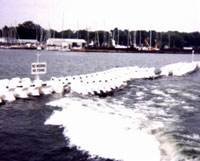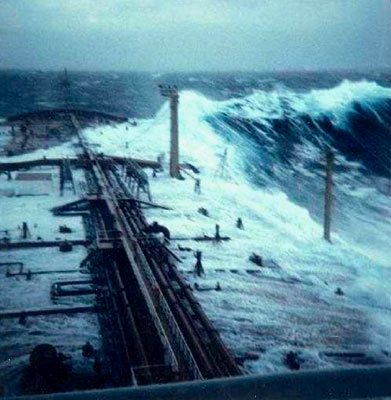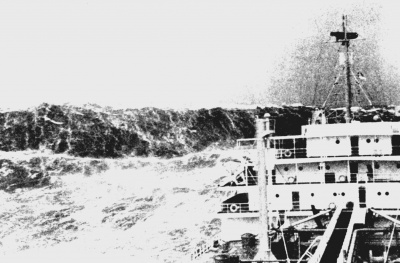Difference between revisions of "Waves"
(usually possible to get rid of "here" and I like it better without the "here" :-)) |
(→Rogue Waves) |
||
| (28 intermediate revisions by 7 users not shown) | |||
| Line 1: | Line 1: | ||
[[Image:Whisprwave breakwater.jpg|thumb|The Palace of Westminster|200px|right|WhisprWave breakwater]] | [[Image:Whisprwave breakwater.jpg|thumb|The Palace of Westminster|200px|right|WhisprWave breakwater]] | ||
| − | * | + | |
| + | * Excellent resource: [http://www.wikiwaves.org/index.php/Main_Page WikiWaves] | ||
* Some background on [http://en.wikipedia.org/wiki/Ocean_surface_wave ocean surface waves] and also [http://www.seafriends.org.nz/oceano/waves.htm waves for oceanographers] | * Some background on [http://en.wikipedia.org/wiki/Ocean_surface_wave ocean surface waves] and also [http://www.seafriends.org.nz/oceano/waves.htm waves for oceanographers] | ||
| − | * A lot of [http://www.artificialreefs.org/ScientificReports/Wave%20reduction.htm math on breakwaters at artificialreefs.org | + | * More background [http://www.seafriends.org.nz/oceano/waves.htm here]. |
| − | + | * A lot of [http://www.artificialreefs.org/ScientificReports/Wave%20reduction.htm math on breakwaters] at artificialreefs.org. | |
* [http://www.whisprwave.com/floating.htm Floating breakwaters] by WhisprWave. | * [http://www.whisprwave.com/floating.htm Floating breakwaters] by WhisprWave. | ||
* [[Ecoboot|Clickets]] | * [[Ecoboot|Clickets]] | ||
| Line 9: | Line 10: | ||
* [http://www.freepatentsonline.com/3953977.pdf A moored device (Patent)] | * [http://www.freepatentsonline.com/3953977.pdf A moored device (Patent)] | ||
* A lot more patents at [http://www.freepatentsonline.com FreePatentsOnline] (free registration required to see pictures) | * A lot more patents at [http://www.freepatentsonline.com FreePatentsOnline] (free registration required to see pictures) | ||
| + | * [http://en.wikipedia.org/wiki/Sea_state Wikipedia Sea state] - standard classifications for wave state | ||
| + | * [http://en.wikipedia.org/wiki/Beaufort_scale Beaufort scale] - scale for wind and waves | ||
| + | |||
| + | ==Describing Waves== | ||
| + | |||
| + | During the service life of an offshore structure, it will experience a huge number of waves, from very small wavelets to possibly giant waves. A practical way to describe these unceasingly changing waves | ||
| + | is to divide them into various categories (sea states), and use short-term wave statistics to depict each sea state and long-term wave statistics, usually in the form of a wave scatter diagram and rosette, to | ||
| + | delineate the rate at which a sea state occurs. | ||
| + | |||
| + | In a similar way, there are two levels in the description of wave directionality, i.e., wave directional spectrum or wave spreading for short-term, and wave rosette for long-term, respectively. | ||
| + | |||
| + | See Section 3 of [https://ww2.eagle.org/content/dam/eagle/rules-and-guides/archives/offshore/104_sfaforfloatingoffshorestructures/pub104_offshoresfa_guide.pdf ABS GUIDANCE NOTES ON SPECTRAL-BASED FATIGUE ANALYSIS FOR FLOATING OFFSHORE STRUCTURES . 2005] for further discussion of Wave measurement. | ||
| + | |||
| + | Map of wave heights: | ||
| + | https://static1.squarespace.com/static/57070436f699bbcfa154423d/t/583b353b725e257a97db2cfe/1480275484044/?format=750w | ||
| + | |||
| + | ==Rogue Waves== | ||
| + | |||
| + | [https://en.wikipedia.org/wiki/Rogue_wave Rogue waves] are unusually tall waves that appear spontaneously on the open ocean. Their source remains somewhat of a mystery, but rogue waves are a topic of significant scientific and mathematical study due to the damage they cause to ships, platforms, etc. Rogue waves are capable of sinking, and have sunken even very large ships. | ||
| + | |||
| + | Recent research finds new ways to model and possibly predict them as described in a Quanta Magazine article from February 2020 titled [https://www.quantamagazine.org/the-grand-unified-theory-of-rogue-waves-20200205/ "The Grand Unified Theory of Rogue Waves"]. The article summarizes both Linear Addition and Nonlinear Focusing theories and describes a new way to combine both into a new theory. | ||
| + | |||
| + | The Dashews describe a Linear Addition theory: | ||
| + | |||
| + | "There really is no such thing as a rogue wave. These larger than normal seas are the result of two wave trains coinciding at just the right moment for their energy to combine. When this happens the higher-than-normal crest is exposed to more wind force and absorbs additional energy. And if the wave happens to be unstable and breaks - because the rotating particles within the wave can no longer make it over the top - there will be a large mass of water falling downhill." | ||
| + | From "Surviving the Storm" by Steve & Linda Dashew, page 241. | ||
==See also== | ==See also== | ||
| − | [[Wave Power]] | + | * [[Wave Power]] |
| + | * [[Big wave videos]] | ||
| + | |||
| + | |||
| + | [[Category:Engineering Data]] | ||
| + | |||
| + | |||
<gallery widths=400 heights=400 caption="Rogue waves"> | <gallery widths=400 heights=400 caption="Rogue waves"> | ||
| Line 17: | Line 50: | ||
Image:Rogue wave2.jpg | Image:Rogue wave2.jpg | ||
</gallery> | </gallery> | ||
| + | |||
| + | {{Ocean Environment}} | ||
Latest revision as of 06:29, 9 January 2021
- Excellent resource: WikiWaves
- Some background on ocean surface waves and also waves for oceanographers
- More background here.
- A lot of math on breakwaters at artificialreefs.org.
- Floating breakwaters by WhisprWave.
- Clickets
- Opening and closing tubes
- A moored device (Patent)
- A lot more patents at FreePatentsOnline (free registration required to see pictures)
- Wikipedia Sea state - standard classifications for wave state
- Beaufort scale - scale for wind and waves
Describing Waves
During the service life of an offshore structure, it will experience a huge number of waves, from very small wavelets to possibly giant waves. A practical way to describe these unceasingly changing waves
is to divide them into various categories (sea states), and use short-term wave statistics to depict each sea state and long-term wave statistics, usually in the form of a wave scatter diagram and rosette, to delineate the rate at which a sea state occurs.
In a similar way, there are two levels in the description of wave directionality, i.e., wave directional spectrum or wave spreading for short-term, and wave rosette for long-term, respectively.
See Section 3 of ABS GUIDANCE NOTES ON SPECTRAL-BASED FATIGUE ANALYSIS FOR FLOATING OFFSHORE STRUCTURES . 2005 for further discussion of Wave measurement.
Map of wave heights: https://static1.squarespace.com/static/57070436f699bbcfa154423d/t/583b353b725e257a97db2cfe/1480275484044/?format=750w
Rogue Waves
Rogue waves are unusually tall waves that appear spontaneously on the open ocean. Their source remains somewhat of a mystery, but rogue waves are a topic of significant scientific and mathematical study due to the damage they cause to ships, platforms, etc. Rogue waves are capable of sinking, and have sunken even very large ships.
Recent research finds new ways to model and possibly predict them as described in a Quanta Magazine article from February 2020 titled "The Grand Unified Theory of Rogue Waves". The article summarizes both Linear Addition and Nonlinear Focusing theories and describes a new way to combine both into a new theory.
The Dashews describe a Linear Addition theory:
"There really is no such thing as a rogue wave. These larger than normal seas are the result of two wave trains coinciding at just the right moment for their energy to combine. When this happens the higher-than-normal crest is exposed to more wind force and absorbs additional energy. And if the wave happens to be unstable and breaks - because the rotating particles within the wave can no longer make it over the top - there will be a large mass of water falling downhill."
From "Surviving the Storm" by Steve & Linda Dashew, page 241.
See also
- Rogue waves
| Ocean Environment |
|---|
| General · Waves · Sea state · Currents · Wind · Politics · Piracy · Biofouling |


